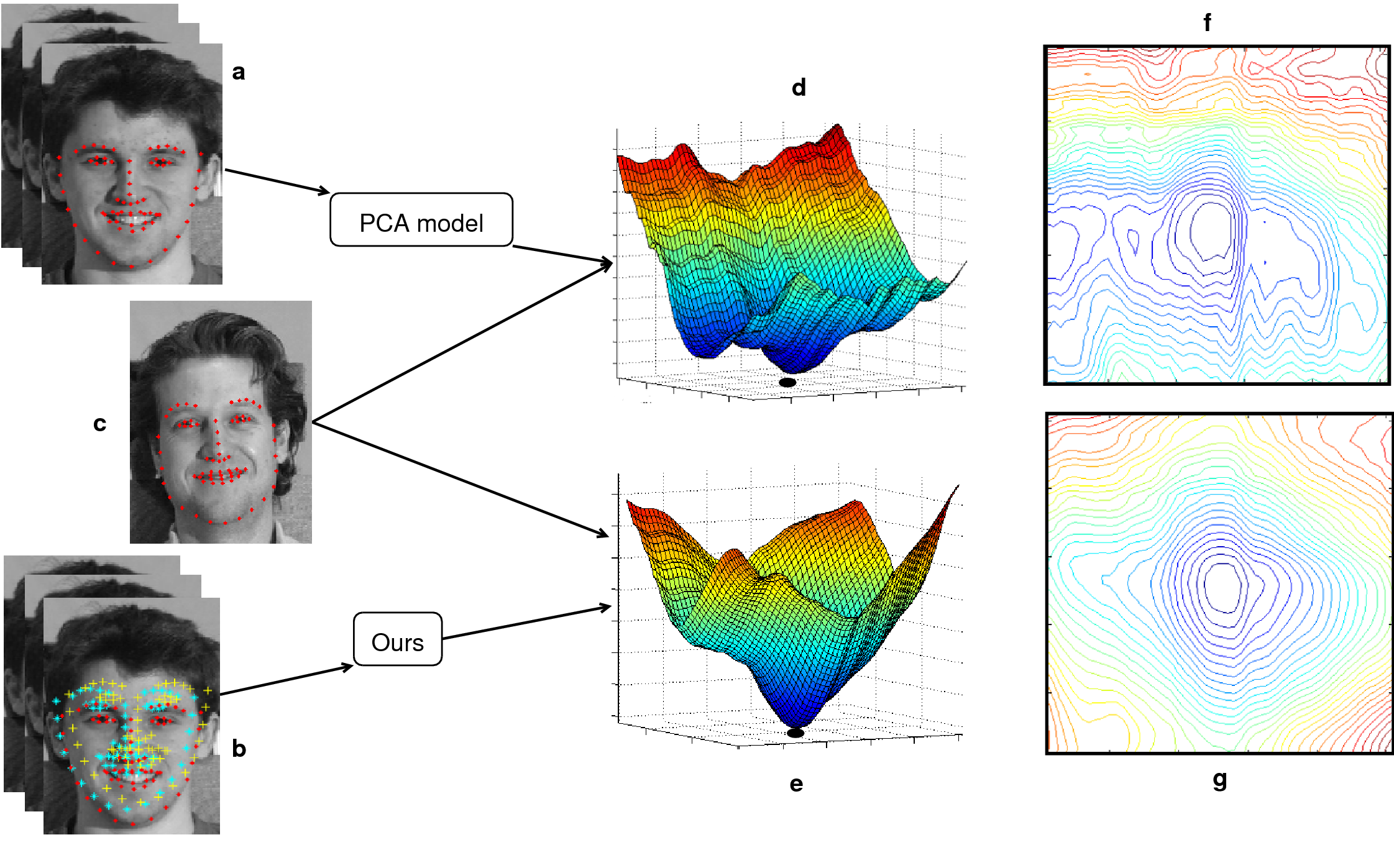Metric Learning for Image Alignment
Abstract
Image alignment has been a long standing problem in computer vision. Parameterized Appearance Models (PAMs) such as the Lucas-Kanade method, Eigentracking, and Active Appearance Models are commonly used to align images with respect to a template or to a previously learned model. While PAMs have numerous advantages relative to alternate approaches, they have at least two drawbacks. First, they are especially prone to local minima in the registration process. Second, often few, if any, of the local minima of the cost function correspond to acceptable solutions. To overcome these problems, this paper proposes a method to learn a metric for PAMs that explicitly optimizes that local minima occur at and only at the places corresponding to the correct fitting parameters. To the best of our knowledge, this is the first paper to address the problem of learning a metric to explicitly model local properties of the PAMs’ error surface. Synthetic and real examples show improvement in alignment performance in comparison with traditional approaches. In addition, we show how the proposed criteria for a good metric can be used to select good features to track.
People
Minh Hoai Nguyen & Fernando de la Torre
Publications
Metric Learning for Image Alignment. Nguyen, M.H. & De la Torre, F. (2009)International Journal of Computer Vision, accepted. Paper.
Local Minima Free Parameterized Appearance Models. Nguyen, M.H. & De la Torre, F. (2008) Proceedings of IEEE Conference on Computer Vision and Pattern Recognition. Paper.
Learning Image Alignment without Local Minima for Face Detection and Tracking. Nguyen, M.H. & De la Torre, F. (2008) Proceedings of the 8th IEEE International Conference on Automatic Face and Gesture Recognition. Paper
Talks
Local Minima Free Parameterized Appearance Models, Machine Learning Lunch, Carnegie Mellon University. Video.
Learning Image Alignment without Local Minima for Face Detection and Tracking, oral presentation, Face & Gesture 08. Slides.
Acknowledgments and funding
This material is based upon work supported by the U.S. Naval Research Laboratory under Contract No. N00173-07-C-2040 and National Institute of Health Grant R01 MH 051435. Any opinions, findings and conclusions or recommendations expressed in this material are those of the authors and do not necessarily reflect the views of the U.S. Naval Research Laboratory. The authors would like to thank General Motors Corporation for their continued support of this research.
Copyright notice
The documents contained in these directories are included by the contributing authors as a means to ensure timely dissemination of scholarly and technical work on a non-commercial basis. Copyright and all rights therein are maintained by the authors or by other copyright holders, notwithstanding that they have offered their works here electronically. It is understood that all persons copying this information will adhere to the terms and constraints invoked by each author's copyright. These works may not be reposted without the explicit permission of the copyright holder.
